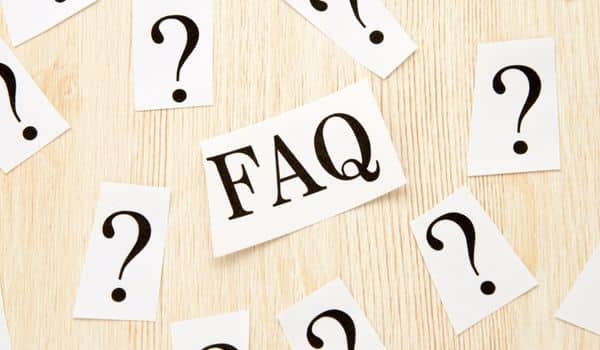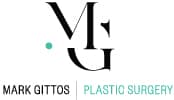How Breast Implant Size Relates to Bra Cup Size
Breast augmentation is a surgical procedure that has gained significant popularity over the years, allowing individuals to enhance their physical appearance and boost their self-confidence. One crucial aspect of breast augmentation is choosing the right implant size that suits individual preferences and body proportions. In New Zealand, renowned plastic surgeon Dr Mark Gittos has been a trusted expert in this field, providing patients with professional guidance to help them make informed decisions about their breast augmentation journey.
Download Dr Mark Gittos’ Guide to Cosmetic Breast Surgery

Breast Implant Sizes: Volume, Diameter, and Profile
When embarking on the journey to choose breast implants that beautifully complement your body, it’s essential to delve into the three key measurements that guide their dimensions.
- Implant Volume: Think of breast implant sizes as being measured in cubic centimetres (cc) of volume, rather than the traditional cup size. Smaller implants typically range from 150 to 200cc, providing a subtle enhancement. A commonly favoured size falls within the range of 300 to 350cc for a balanced result. If a more pronounced augmentation is desired, larger implants starting at 400cc may be considered. However, Dr Gittos cautions against going excessively large (up to 800cc or more), as this can lead to potential challenges and complications
- Implant Diameter: The diameter, or width at the base of the implant, plays a crucial role in shaping the outline of the breast and achieving a natural fit. This measurement spans from approximately 7.4cm to 17.2cm. Ensuring the right width is selected is essential in achieving a breast appearance that harmonises with your body’s contours
- Implant Profile: The projection of the breast (refers to how far the breast extends forward from the chest wall), or implant, is guided by the implant profile. Profiles can range from low/moderate to ultra-high, each influencing the extent of forward projection. A low/moderate profile offers subtlety, while an ultra-high profile creates a more pronounced fullness
Dr Gittos highlights that understanding these crucial dimensions – implant volume, diameter, and profile – empowers you to collaborate effectively with him to select breast implants that align precisely with your aesthetic goals.
Breast Implant Profiles
Breast implant profiles play a pivotal role in sculpting the desired appearance of augmented breasts. These profiles determine how much forward projection and fullness your breasts will exhibit, allowing you to achieve a look that harmonises with your body’s natural contours.
- Low Profile Implants
Low profile implants offer the least amount of projection from the chest wall. They are a popular choice for those seeking a subtle enhancement that closely resembles the natural breast shape.
The outcome is a gentle boost in volume, adding slight fullness while maintaining a natural slope. This profile is ideal for individuals looking to enhance their breasts modestly.
- Moderate Profile Implants
Moderate profile implants strike a balance between projection and natural appearance. They offer a versatile option suitable for a wide range of body types and aesthetic preferences.
With moderate projection, these implants provide a moderate increase in fullness, resulting in a classic and timeless breast appearance.
- High Profile Implants
High profile implants are designed to provide more projection and fullness compared to lower profiles. They create a more noticeable augmentation effect.
The higher projection of these implants contributes to a rounder and more voluptuous breast appearance. They are chosen by those seeking a more prominent and curvaceous silhouette.
- Ultra-High Profile Implants
Ultra-high profile implants offer the most significant forward projection and fullness. They are selected by individuals looking for a bold and dramatic transformation.
These implants create a striking silhouette with considerable fullness in the upper portion of the breasts. The result is a prominent, attention-grabbing look.
How Breast Implant Sizes Relate to Cup Size
Breast implants are measured in cubic centimetres (cc), reflecting their volume. While there isn’t an exact formula for predicting cup size changes, there are general ranges that offer an estimate of the potential transformation. Remember that individual outcomes can vary based on your body’s natural shape, proportions, and surgical technique.
Here’s a visual representation to help you grasp the connection:
| Breast Implant Volume (cc) | Potential Cup Size Increase |
| 250 – 300 cc | Cup size A – B |
| 300 – 350 cc | Cup size A – C |
| 370 – 430 cc | Cup size A – D |
| 250 – 350 cc | Cup size B – C |
| 350 – 400 cc | Cup size B – D |
| 400 – 450 cc | Cup size B – DD |
| 300 – 350 cc | Cup size C – D |
| 370 – 450 cc | Cup size C – DD |
| 450 – 550 cc | Cup size C – E |
| 300 – 400 cc | Cup size D – DD |
| 450 – 600 cc | Cup size D – E |
To illustrate how this works, consider this example:
If you’re considering a breast implant volume in the range of 250 to 300 cc, the potential cup size increase could span from Cup Size A to Cup Size B. This means that if you currently wear an A cup, opting for implants within this range could result in a transition to a B cup.
Factors to Consider when Choosing the Right Breast Implant Size
When it comes to selecting breast implant size, consider these factors:
- Body Proportions and Frame: Dr Gittos evaluates body proportions, ensuring implants align with natural contours for a balanced appearance
- Aesthetic Goals and Lifestyle: They play a significant role in determining the appropriate breast implant size by considering the desired appearance and practical considerations for daily activities and clothing choices
- Personal Preferences and Comfort: Implant size should reflect self-image and comfort, promoting confidence in the choice made
- Projection and Profile: Implant projection impacts fullness and shape
- Virtual Imaging Technology: Advanced imaging aids visualisation, enabling patients to virtually “try on” sizes for informed decisions
FAQs about Breast Implant Sizes and Cup Sizes

What factors should I consider when choosing an implant size?
Here are some factors to consider when choosing an implant size:
- Your desired breast size and shape: When contemplating your desired breast size and shape, it’s important to envision the ideal outcome that aligns with your personal goals. Are you aiming to increase your cup size by a few measures, or do you envision a more dramatic transformation?
- Your body type: Your body type will play a role in determining the right implant size for you. For example, if you are petite, you may want to choose smaller implants to avoid looking top-heavy
- Your lifestyle: Your lifestyle will also affect the decision of implant size. For individuals with an active lifestyle, opting for implants that have a reduced tendency to shift might be preferable
- Your budget: Breast implants can range in price. It is important to factor in the cost of implants when making your decision
How do I communicate my desired outcome effectively during consultations?
It is important to be clear and specific when communicating your desired outcome during consultations. Here are some tips:
- Bring photos of your desired breast size and shape
- Use words like “fuller,” “perkier,” or “natural” to describe your desired look
- Be prepared to answer questions about your lifestyle and budget
- Trust your gut instinct and don’t be afraid to ask for a second opinion
What is the typical recovery period after breast augmentation surgery?
- The typical recovery period after breast augmentation surgery is about 1-2 weeks. During this time, you will need to wear a compression bra and avoid strenuous activity. You may also experience some pain, swelling, and bruising. Most patients can return to work and normal activities within 1 week of surgery. It is important to watch out for untoward signs and symptoms and allow your body to fully heal during the recovery period.
Can breast implant sizes be adjusted in the future if needed?
Yes, breast implant sizes can be adjusted in the future if needed. This is known as breast augmentation revision surgery.
Revision surgery is usually performed to:
- Correct problems with the original surgery, such as asymmetry or capsular contracture (occurs when the scar tissue that forms around the implant contracts)
- Increase or decrease the implant size
- Change the type of implants
Further Reading about Breast Implant Surgery with Dr Gittos
- Read Dr Gittos’ Breast Implant Options Page
- Read Dr Gittos’ Breast Augmentation Surgery Page
- Read Dr Gittos’ Blog about What Is The Best Breast Implant Shape?
- Read Dr Gittos’ Blog about What Is The Best Breast Implant Position – Above or Below?
- Read Dr Gittos’ Blog about How to Choose the Best Breast Implant Profile and Projection
Medical References about Breast Implant Sizes
- Breast Augmentation – StatPearls
- Breast Implants – StatPearls
- Matching the Implant to the Breast
- What Is the Standard Volume to Increase a Cup Size for Breast Augmentation Surgery?
- An Online Calculator for Estimating Breast Implant Volume
About Dr Mark Gittos FRACS (Plast) – New Zealand Plastic Surgeon
Practice locations in Herne Bay Auckland, Northland and Bay of Plenty – Kerikeri, Whangarei, New Plymouth & Tauranga
Dr Mark Gittos is a leading Specialist Plastic Surgeon and operates a practice in Herne Bay, Auckland and in the UK. The practice focuses on both surgical and non-surgical procedures, each designed to help restore, improve or change a physical characteristic or problem. The first step in every case is to talk through your personal requirements and explore all the options, before deciding on the most effective solution.
Dr Mark Gittos offers high-quality, natural-looking cosmetic surgery results and is highly experienced in Breast, Body and Face Surgery having performed over 4000 Surgeries in the last 26 years. With worldwide expertise Dr Gittos is an expert in breast, face and body surgery for men & women.
Naturally, before any treatment is begun, we will explain clearly the advantages and risk factors; so that you have the information you need to make an informed decision that is best for you. Visit the practice to find out more.

NEXT STEPS
Please NOTE: Dr Gittos only performs surgery on non-smoker patients with a BMI less than 30. To check your BMI please visit the NZ Heart Foundation website. For help giving up smoking before surgery visit the Smoke-Free website
Do your Research
- Read the Website and Blogs relevant to your procedure
- Browse our Frequently Asked Questions including how to choose a Surgeon for your procedure
- Download and read the FREE Guides to Surgery
What to Bring to your Plastic Surgeon Consultation
- Bring a friend or relative to help discuss the information and your choices
- Take lots of notes and read the documents provided thoroughly
- Dress in simple clothes as you may need to undress for examination
- Bring your medical referral and any relevant medical documents or test results
Book your Initial Surgery Consultation
- A Referral from your GP or specialist is helpful but NOT essential – you can have a consultation without a GP Referral
- Email us or Call on 09 529 5352 to arrange your surgeon consultation appointment.
- Book a consultation with Dr Gittos by paying the Consultation Fee – $325 incl GST
Travelling for Surgery? – Consider post-surgery luxury recovery in a Hotel with LuxeCare
Please contact us to arrange to book a consultation with our Specialist Plastic Surgeon or to speak with our Patient Care Advisor.
Send an enquiry form today or phone 09 529 5352 during Clinic Hours.
